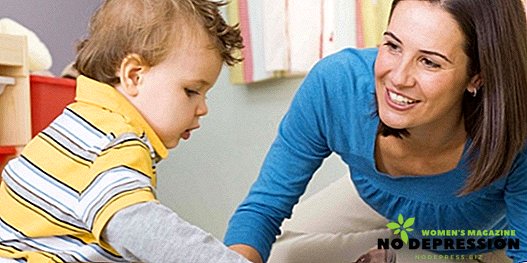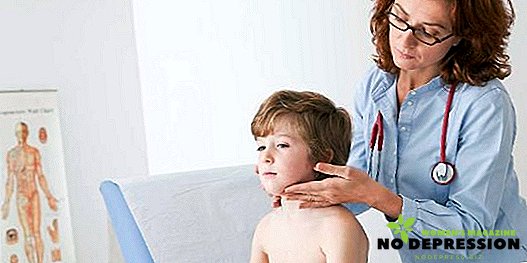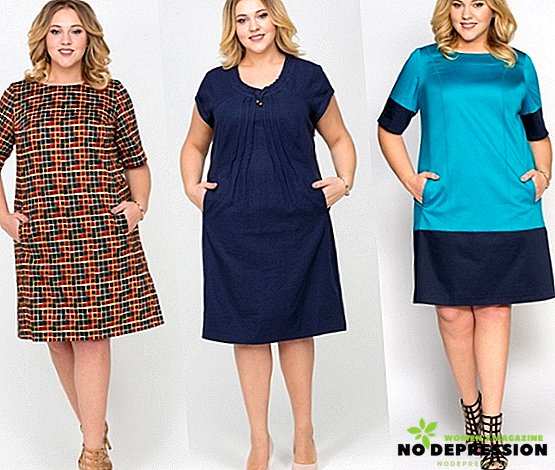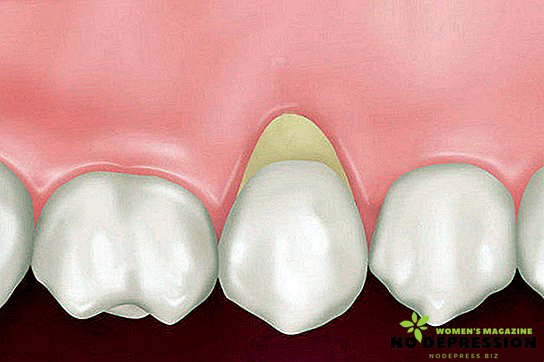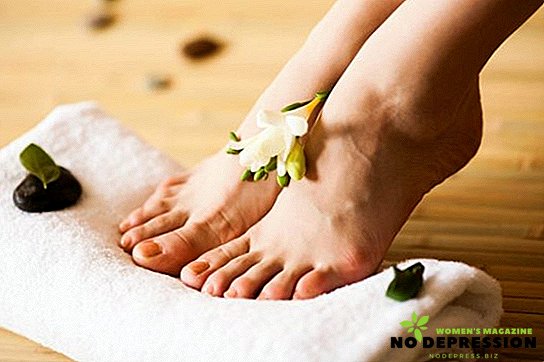At first glance, some diseases seem insignificant and look like small defects. But soon they can bring serious consequences. Such insidious disease is also children's flatfoot.
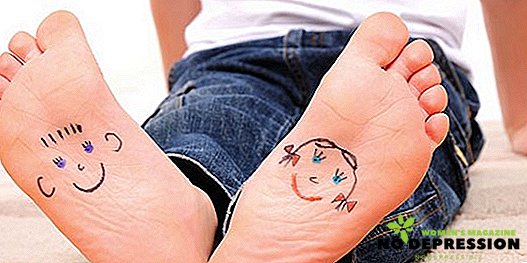
What is flatfoot than it is dangerous, its consequences
Flatfoot is a disease of the foot, which makes it flat and deprives the shock-absorbing features. When children start to complain of tiredness or pain while walking, many parents blame it on ordinary moods and just scold the kids.
Such an approach is unacceptable, because if you do not diagnose flatfoot on time and do not begin to treat it, it may subsequently seriously affect the health of the baby.
The foot is a kind of shock absorber for the skeleton during active movement. If a child's feet begin to form incorrectly, then they stop acting as shock absorbers and all the tension is on the bones of the legs and the spine. In addition, flat feet leads to:
- premature development of arthrosis;
- destruction of cartilage and bones;
- scoliosis;
- ingrown nails;
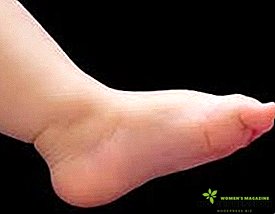
- curvature of the toes and all the bones of the foot;
- limping;
- extreme tiredness when walking;
- vertebral hernia;
- radiculitis;
- osteochondrosis.
The consequences of running flatfoot are really terrible. That is why parents need to closely monitor the gait of the child and how he puts the foot. It is also worth occasionally consulting an orthopedist.
Causes of flatfoot, factors affecting its development
This disease does not develop for any one reason. Usually there is a whole range of different conditions and circumstances that lead to flat feet:
- genetic predisposition;
- excessive weight or obesity;
- doing sports with big weights;
- constant tension on the legs;
- weak muscular system or paralysis;
- rickets;
- injuries.
Increased risk of flatfoot is observed in children who live in the city, because they often walk in tight shoes than rural children, most often barefoot. That is why it is necessary to train the foot of the baby, not constraining his shoes.
For example, at home, the foot is easily trained by walking barefoot on spilled peas. Also of great importance is foot massage and a uniform load on the feet.
No less important is the child's shoes - it must be carefully selected so that it does not injure the foot. It is advisable to buy shoes with a soft arch support and a small heel (0.5-1 cm).
It is strictly not recommended to wear second-hand shoes, as worn-out shoes do not load the foot correctly. You should not buy flat (without a heel), narrow or overly wide shoes.
Types of flatfoot in children and their signs
There is a classification of flatfoot, which characterizes this disease from different angles.
By manifestation in time:
- congenital - about 3% of patients have a genetic predisposition;
- acquired - in 97% of cases the disease developed due to other factors.
For reasons of appearance:
- paralytic - in consequence of cerebral palsy;
- rachitic - in case of metabolic disorders of the body;
- traumatic - as a result of foot injuries;
- static - due to the weakness of the muscle tone of the foot.
In the direction of flattening the foot:
- longitudinal - stop completely lay down on the floor;
- transverse - arch of the foot becomes wider, and the foot decreases in length. Often accompanied by thickening of the lateral bone;
- combined - deformation of the foot, including signs of longitudinal and transverse flatfoot.
There are also different degrees of the disease:
- The first degree is an almost imperceptible deformation more like a cosmetic defect;
- The second degree is not only visible deformation, but also weak pains at movement;
- The third degree is complete deformity of the foot, accompanied by severe pain when walking, as well as scoliosis, hernia of intervertebral disks, etc.

Children usually have congenital flatfoot in 3% of cases, so it is very easy to get rid of this disease if you notice and take appropriate actions in time. Otherwise, by the age of majority the child will have serious problems in the form of flat feet of 2-3 degrees.
How to determine flat feet in a child
Usually, plantography is done to identify flatfoot. During this procedure, a solution is applied to the feet, and the child should step on clean paper.
On paper there is a trace of the foot, which clearly shows whether the leg is deformed. But this procedure should only be carried out by a doctor, since only a specialist can make an accurate diagnosis.
However, parents should be attentive to the child in time to notice the symptoms of flatfoot:
- clubfoot gait (socks look out);
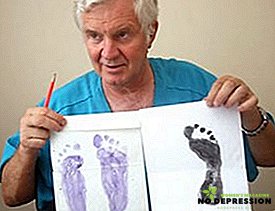
- child comes inside the foot;
- severe fatigue after prolonged walking, pain in the back and legs;
- complaints do not pass with age;
- child unevenly taps heels on shoes.
If such symptoms are present in a baby, parents should take him as soon as possible to see an orthopedic surgeon.
Features of treatment of flatfoot of varying degrees in children of different ages
A special treatment for flatfoot is not prescribed if the baby is 2-5 years old and has only flexible flat-footedness of the first degree. It does not cause pain when moving, and therefore does not need immediate intervention, but merely involves a gradual change in the habits and lifestyle of the baby. In such cases, active prophylaxis is usually recommended:
- massage;
- foot exercises;
- special insoles;
- vitamins;
- special diet high in calcium;
- matching shoes
Most often, after adhering to such a plan, the foot is formed properly and flatfoot disappears.
In this case, the arch of the foot could not properly form and took an irregular shape. In this case, the usual prevention will not help, and all treatment will be directed only to relieve the child from pain.
For the relief of painful symptoms use:
- physiotherapy - electrophoresis, iontophoresis, foot baths;
- massage and reflexology - only by a specialist;
- wearing orthopedic shoes;
- physical therapy;
- occasionally plaster bandages or splints;
- surgical intervention.

Treatment is prescribed by an orthopedist, depending on the age, exact type of flatfoot and its degree. It is therefore necessary to be monitored regularly by this doctor:
- the first 30 days of life - it is necessary to exclude the presence of congenital abnormalities;
- in 3 months - the exclusion of dislocation of the pelvic bones;
- at 6 months - examination and testing for rickets;
- in 12 months - control the development of the skeleton;
- in 3 years - examination of the feet and posture;
- From 3 to 18 years old - a visit to an orthopedist is recommended during each routine examination every 12 months.
Timely detection of the disease is 100% confidence in its complete cure.
Drug treatment
In the case of marked pain or swelling at the plane can be prescribed medication. Usually it is tablets and syrups with anesthetic substances in its composition:
- Nurofen;
- Analginom;

- Troxevasin-gel for strengthening venous vessels;
- Heparin ointment - to thin the blood;
- Vitamin D - in case of revealed rachitis or its prevention;
- muscle relaxants and antibiotics - in the case of paralytic flatfoot, as a consequence of cerebral palsy.
Antibiotics for the treatment of this disease are used only if there are symptoms of rheumatism or another bacterial disease.
They can also prescribe medication in case of surgery, which is prescribed for severe longitudinal flatfoot of grade 2–3 then if it cannot be cured or stopped by other less painful methods. An operation is usually effective if it is performed at the age of 10 to 20 years, during the growth of the foot.
Today, for the correction of the foot, arthroeresis is used - a titanium implant in the foot, which allows you to change the position of the foot bones, which will eliminate flat feet, after which the foreign object will be removed from the foot.
Treatment of flatfoot in children at home: folk methods
When flat feet can be cured, folk methods are also effective. Usually they consist in:
- evening hot trays with chamomile, sea salt or coniferous extract;
- contrast baths - alternately keep your feet in hot and cold water;
- rubbing the feet with ice, which will relieve fatigue;
- foot massage;
- physiotherapy;
- compresses and rubdowns that eliminate pain.

Excellent help to relax the legs of herbs and infusions, which are usually added to the hot baths for steaming feet:
- wormwood - its leaves are washed and wrapped around the feet, wrapping them;
- a mixture of iodine (3%!), two tablets of aspirin and lemon essence - the mass is applied on the feet, which are wrapped with heat;
- a strong solution (1 to 1) of sea salt, which is added to the baths;
- tincture of oak bark (1 kg of bark in 5 liters of water) - boiled for half an hour, and then added to the bath;
- tincture of sage - (100 g per 2000 ml of boiling water) is added to the bath;
- peppermint - which is steamed in boiling water and added to the bath;
- Linden infusion - (100 g brewed in 2 liters of boiling water) is added to the baths;
- tincture of immortelle on alcohol - as a compress for the legs, as the treatment and prevention of flatfoot, sciatica and pain in the joints.
These methods perfectly help to cope with fatigue and pain in the feet, especially after a long day in motion. These methods can be used for prophylaxis or as part of a medical complex.
Massage and manual therapy
For the prevention and treatment of flatfoot is often prescribed a special massage and manual therapy. Most often, these procedures are done in a hospital with a specialist, but you can practice them at home.
Then rinse the feet with cold water and put the baby on the bed.
You must purchase a special massage mat. Place it in the bathroom and, when washing, put the child on it barefoot and make simple movements with it:
- rise on your socks;
- roll from toe to heel
- stand on the outer and inner edge of the foot alternately.
As a massage, it is also necessary to give the child to walk barefoot on large and small pebbles, dry peas or nuts.

Exercises
In order for the arches of the feet in a child to form correctly, it is necessary to perform special exercises with him that will strengthen the muscles and the joint-ligamentous apparatus. Typically, physiotherapy exercises are assigned based on children's physical fitness, age and extent of the disease. The complex of exercises looks like this:
- put feet together and keep the socks motionless, spread and reduce alternately the heels;
- to drive in clockwise and contra;
- sitting on the floor, as much as possible to attract and pull off to his feet, holding their socks;
- toes to take small items from the floor and shift them;
- take pencils and felt-tip pens with your fingers and draw with your feet on the paper;
- squeeze the rubber ball with your feet;
- roll your feet on the floor rolling pins, sticks or balls;
- roll from toe to heel;
- crouch on the toes;
- climb the swedish wall;
- walk on ribbed and sloping surfaces;
- turn right and left without moving the foot.
Before the start of classes, it is necessary to consult an orthopedic doctor in order not to harm the health of the child.

Tips of Dr. Komarovsky
The well-known doctor Komarovsky concerning flat-footedness in children gives the following advice to anxious parents:
- First of all, do not be nervous and do not start to panic if the child begins to flatfoot or the doctor makes a diagnosis of flatfoot. Everything can be stopped, and if the child is still small, then the probability of complete cure is 100%;
- Always carefully choose shoes. Buying special orthopedic shoes, most often due to advertising. It is not necessary to buy special medical shoes - it is enough to make sure that the child is comfortable in his shoes, she does not press, does not rub, has a hard sole and a small heel. You can put special insoles inside, but it is not necessary to buy special expensive shoes;
- Regularly go on consultations with the orthopedist. It is the doctor who will be able to control and prescribe preventive exercises for the correct formation of the foot. Independent exercises or massages can harm the baby;
- Give your child more often to walk barefoot around the garden, garden or playground;
- Regularly engage with the child on the wall bars;
- Follow the posture.
Performing these simple tips and regular observation with an orthopedist can prevent or cure flat feet in time.
Prevention
Prevention is necessary not only for the feet, but for bones and the skeleton as a whole, since their strength and proper formation ensures correct posture and gait. Children must be seen from an orthopedic surgeon from an early age.

Prevention of flatfoot at home is a simple set of actions:
- Walking barefoot on uneven surfaces: sand on the beach, grass, slides and attractions on the playgrounds;
- If you can’t walk barefoot on the street, you can do it at home: scatter nuts (chestnuts or hazelnuts), peas or beans and let the child walk on them, put them in a bag and let them walk and jump on it or buy a special orthopedic mat;
- Buy special shoes with a prophylactic arch support in order to form the right arch;
- To massage the feet of the baby;
- Perform special exercises with the child;
- Formulate a diet with a sufficient content of calcium, phosphorus and vitamins of group D.
Flat feet can develop not only in infancy or in the first years of a child’s life - very often it develops and progresses as early as adolescence due to heavy loads on the legs. Therefore, to monitor the gait of the child and from time to time to send him to the orthopedist will have to his adulthood.
A few more exercises on treating flatfoot at home are in the following video.





